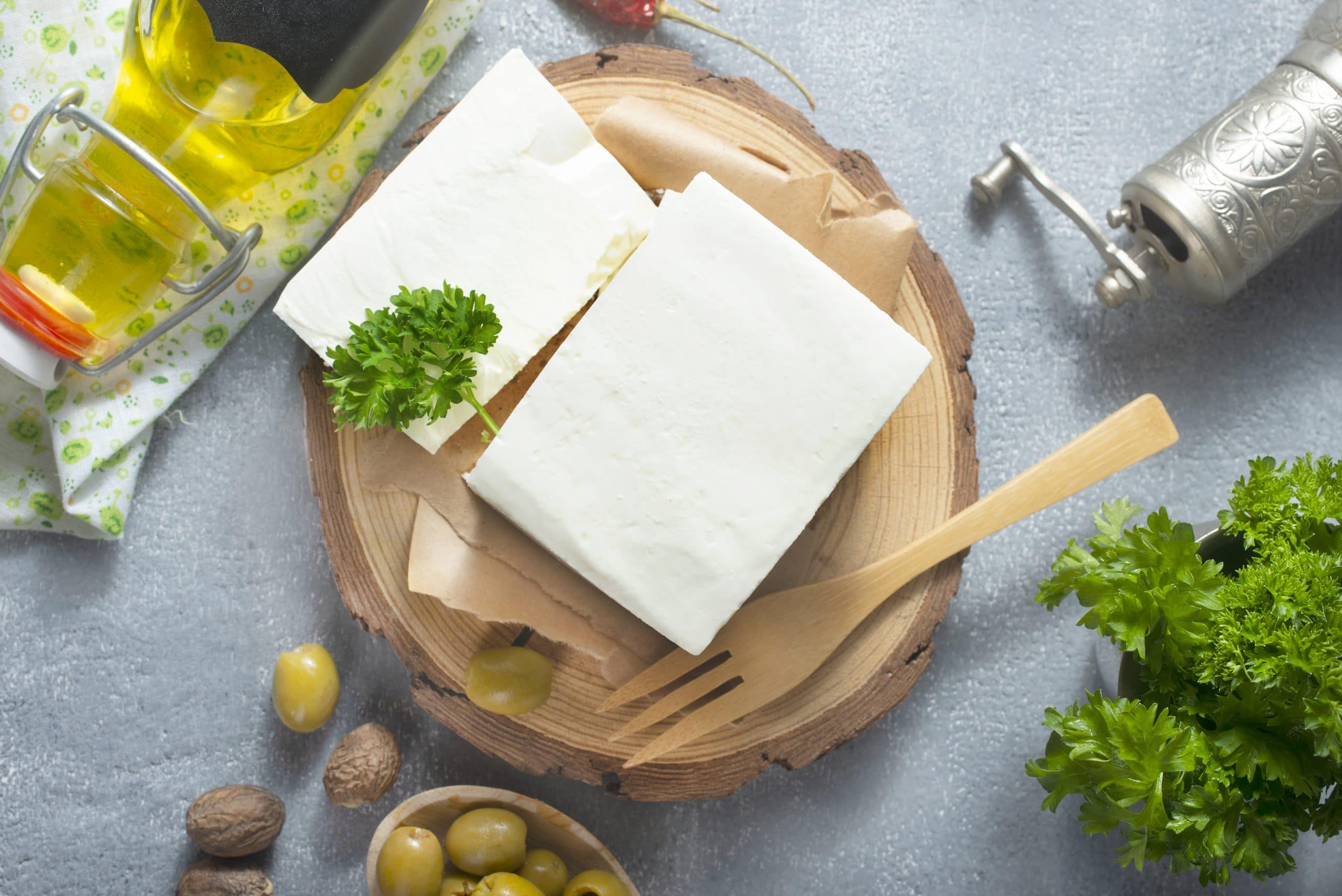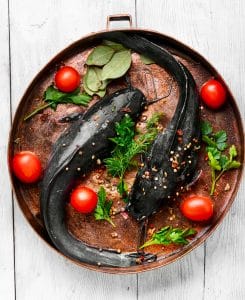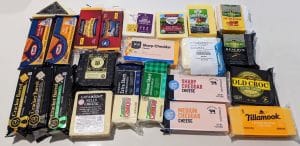What Does Feta Cheese Taste Like?
Important Note: When you buy through our links, we may earn a commission. As an Amazon Associate we earn from qualifying purchases. Content, pricing, offers and availability are subject to change at any time - more info.
If you’ve ever had Greek food, you’ve definitely eaten feta cheese. It’s a beautifully crumbly, soft, white cheese with a lot of flavor in such a small bite. But for those who’ve never had the pleasure, what does feta cheese taste like?
Feta cheese tastes tangy and salty because it is cured or aged in brine. Feta from sheep or goat’s milk has a more robust, gamey flavor, while cow’s milk feta is delicate and creamy. Feta’s taste differs depending on where and how it is made and stored, how long it is cured, and how it is served.
The taste of feta cheese is very distinctive — you won’t confuse it with another cheese. But while it is hearty and flavorful, feta cheese is highly versatile. You’ll encounter this ancient white cheese in many international cuisines and various recipes.
- What Does Feta Cheese Taste Like?
- How To Store Your Feta For Best Flavor
- What Does Feta Cheese Taste Good With?
- So, What Does Feta Cheese Taste Like?
What Does Feta Cheese Taste Like?
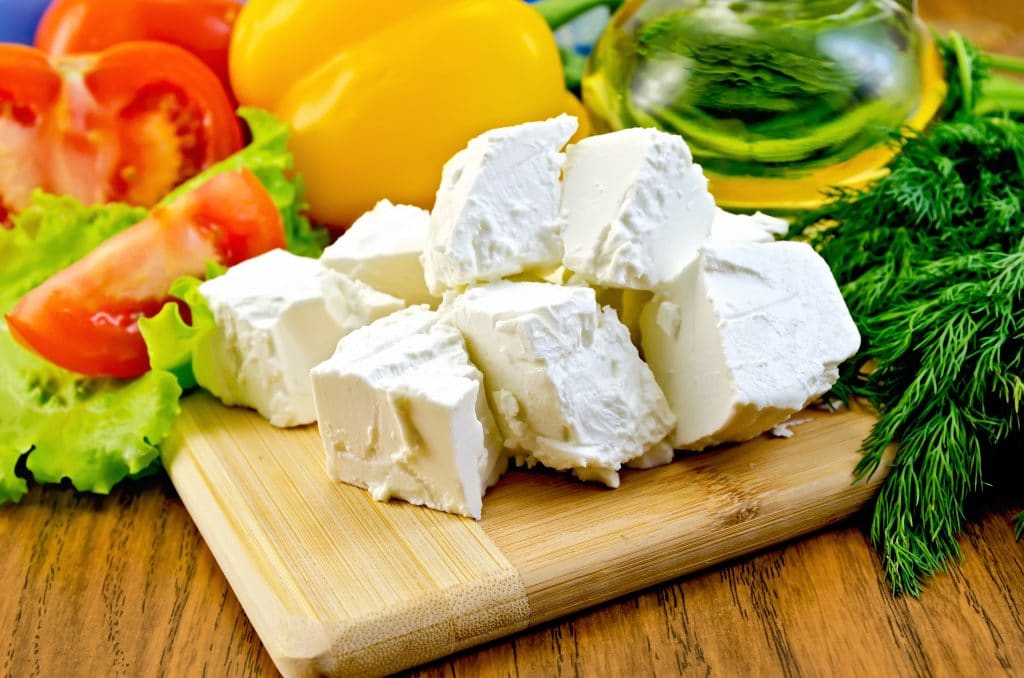
Descriptions of how feta cheese tastes vary from strong and sour to soft and mild. This difference is because there are several kinds of feta cheese. Feta’s taste depends on the following: its ingredients, where it was made, and the curing and aging methods.
To understand why feta cheese tastes as it does, let’s look at what exactly feta cheese is.
What Is Feta Cheese?
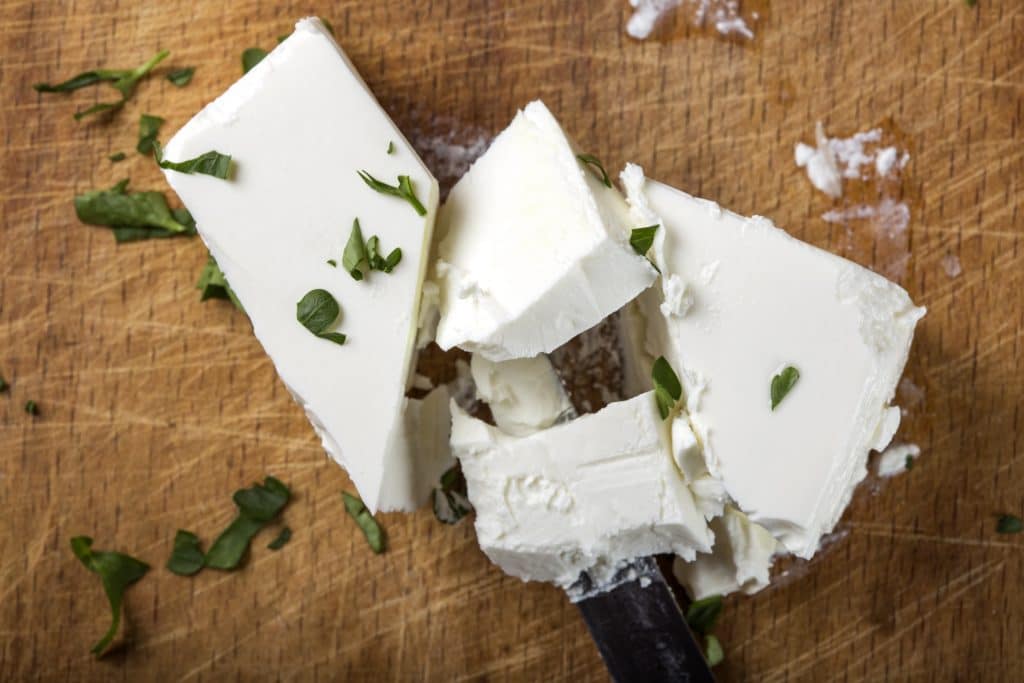
Feta cheese is a soft, white, rindless curd cheese, similar to a cottage or cream cheese.
To make feta, you combine milk (usually sheep or goat’s milk) with rennet or casein and leave it to coagulate or thicken. You then remove the curds and drain off the excess whey.
Their fermentation process in brine or saltwater turns these curds into feta. Although feta cures for months in brine, the cheese remains fresh and soft.
The curing process gives feta its distinctive tangy flavor and bite.
What Does Greek Feta Taste Like?
Although you can find feta-style cheeses worldwide, Greece is regarded as the home of feta cheese, making feta from goat and sheep’s milk.
Greek feta tastes rich and zesty, with a salty flavor and buttery aftertaste.
Made for thousands of years, Greek feta has a unique taste partly because of the milk it’s made from, which is infused with hints of the herbs, minerals, and wild grasses that the sheep and goats eat as they forage. The pasture differs from region to region and country to country, which accounts for the different flavors of feta, even within Greece.
The Greek and EU authorities require that feta is made from a combination of sheep and goat’s milk (usually 70% sheep’s milk and 30% goat’s milk), giving Greek feta a distinctive tangy flavor.
Any cheese made from goat’s milk has a distinct earthy tone that you love or hate. However, goat’s milk feta combines this intense earthiness with a mild flavor, mainly if the cheese uses goat and other milk.
Another reason for the recognizable flavor of Greek feta is that it ages in wooden barrels filled with brine. Feta is a rindless cheese, so it absorbs the flavors of the brine and the wooden barrel as it ages.
Barrel-aged feta has a distinctly creamy, almost nutty flavor. Feta has to cure in brine for at least two months and as long as 12 months. The longer feta cures, the tangier and pepperier the flavor becomes as it ferments and absorbs the salt solution.
The texture of the cheese also hardens as it ages, becoming more and more crumbly. The more goat’s milk in the feta, the crumblier and drier it will be.
Greek feta is so highly prized that the European Union has listed it as a protected designation of origin (PDO) product (like Parmigiano Reggiano and Roquefort cheese). In other words, only feta from designated regions in Greece (the Peloponnese, Epirus, Central Greece, Macedonia, Thessaly, Thrace, and the islands of Lesvos and Cephalonia) can be called “feta” in the European Union.
Other similar cheeses are called soft, white cheese. Outside of Europe, cheese can be called feta.
Turkish Feta
Turkey is home to various soft, white, rindless cheeses, none of which are actually called feta. However, beyaz peynir, the most popular Turkish cheese, is also a white, brined cheese similar to feta but with a grainier texture.
Beyaz peynir, eaten fresh, is mild and plain, but it gets tangier the longer it is brined. Often eaten for breakfast, this smooth cheese has many regional variants, each prepared slightly differently and flavored depending on the animals’ pasture.
Turkish “feta” can be made from sheep, goat, or cow’s milk. It is often shaped and brined in woven baskets.
French Feta
French feta is the mildest feta cheese, far less salty, and creamier than other feta. It is brined for shorter than other feta-style cheeses, accounting for its mellow flavor.
Most French feta comes from the southwestern part of France and is made from Lacaune sheep’s milk, which is also used to make the delightful blue Roquefort cheese. Using sheep’s milk also influences the flavor of French feta, making it buttery.
Bulgarian Feta
Most sheep’s milk feta has a bold flavor, and Bulgarian feta or sirene is a good example, described by some as “sheepy,” gamey, or yeasty. This flavor comes from the unique pasture in the country.
Bulgarian feta is also the saltiest and tangiest feta because of the production method, which uses yogurt as a culture.
Although primarily made from sheep’s milk, Bulgarian sirene can also come from goat or buffalo milk.
Israeli Feta
Israeli feta is typically sharp flavored, with a creamy, mellow aftertaste. The sharpness comes from the use of sheep’s milk, and the mellowness is a result of the short brining period of only one month.
The texture of Israeli feta is soft and firm, easily sliced rather than crumbled, also because of the short brining. Feta-cheese purists argue that this is not authentic feta as it has not fermented long enough. However, it remains a delicious cheese.
Danish White
As part of the EU, Denmark is not allowed to call its soft white cheese “feta,” so it is usually labeled “Danish White.”
Danish White differs from Greek feta as it is made from cow’s milk, which has a massive impact on the flavor of the cheese, making it far milder, with a creamier taste, and firmer consistency.
The production method for Danish feta differs from the traditional Greek methods, as producers make this cheese by ultra filtration or reverse osmosis methods. Purists argue that this makes Danish White inferior feta, but it does result in the cheese’s mild flavor and springy texture.
Because Danish White is so mild, it is often flavored with garlic, herbs, or sun-dried tomatoes.
American Feta
Because of the mechanized production process, the quality of the milk used, and the shorter aging period in metal bins, rather than wooden barrels, American feta cheese is often quite bland and chalky, with a mushy texture and a sour, metallic aftertaste.
However, many artisanal feta producers create delicious feta in the States, with many of these having a zesty flavor and a typically citrus aftertaste.
Unfortunately, cow’s milk feta sours more easily than feta made from sheep or goat’s milk. Many people who have tried feta and not liked it have actually eaten feta that’s past its prime and describe it as tasting acidic or like old socks.
How To Store Your Feta For Best Flavor
Being a cheese that is cured in brine, it is best to store your feta in the refrigerator in a brine solution to preserve its freshness, creaminess, and zestiness.
You will usually purchase feta in brine. It is always best to taste the feta before storing it. If it is to your taste, refrigerate it in the existing brine.
If the feta is too salty, how you store it can change the flavor. To reduce the saltiness, dilute the brine or place the feta in plain water as the salt will leach out of the cheese into the water.
Sometimes you buy feta without brine. If so, make a brine of a pint of water and a few pinches of salt for storage.
To make your feta creamier, add a couple of tablespoons of milk to the brine.
Always store feta in a sealed container, with the brine covering the cheese. Properly stored feta will last for three weeks in the fridge.
What Does Feta Cheese Taste Good With?

Another reason people can’t always agree on what feta cheese tastes like is because this cheese appears in so many different kinds of recipes and dishes. Feta tastes different if it is in salads or cooked.
What Does Feta Cheese Taste Like As A Topping?
If you’re unfamiliar with feta cheese and would like to add it to your cooking routine, first try feta as a topping. Feta’s bright flavor will add a salty bite to any dish without overwhelming the other flavors.
Crumble feta over cheesy potatoes, spicy chicken wings, steamed broccoli or baked cauliflower, or pasta dish.
How Does Feta Taste In A Sandwich?

Feta is such a piquant cheese that it can stand alone as a sandwich ingredient. Sliced Greek feta or Bulgarian feta needs little accompaniment with bread apart from a drizzle of olive oil and some fresh oregano.
For a more luscious sandwich topping, mash soft, creamy feta (Danish or Turkish works well) until smooth and slather it on fresh bread.
Also, consider feta as a topping when you next make bruschetta — its acid tones go well with tomatoes.
How Does Feta Taste In Salads?

One of the typical ways feta is served in Greece is as part of a salad, and you will often find feta served crumbled on top of salads. Its soft texture and tangy flavor make it a great accompaniment to tomato and cucumber, but also try it with lettuce, endives, spinach, and beets.
Bulgaria’s national salad, shopska, is also a combination of feta and fresh vegetables, including fresh peppers. Check out this recipe for Simple Bulgarian Shopska Salad.
However, feta’s rich fattiness also means it can form part of a fruit-based salad – watermelon and feta are an excellent combination of sweet and sour, with the added textural contrast of crunchy and crumbly
What Does Baked Feta Cheese Taste Like?
Recipes for baked feta have been doing the rounds, and there’s a good reason: baked feta is tender, and the gentle heat of baking enhances the sweet, citrus notes of the cheese.
Baked feta has a strong enough flavor to stand alone as a starter, just with a bit of olive oil or seasoned with various spices: try chili, paprika, fennel, or cumin.
Baking sweet peppers alongside feta makes for a delicious appetizer. Feta works well as a stuffing for other baked veg, including tomatoes, potatoes, or take little marrows to new heights with Simple Stuffed Zucchini With Feta.
What Does Fried Feta Cheese Taste Like?
Because of its high melting point, mature feta holds up well even when deep-fried, not losing its shape and retaining its moisture, freshness, and robust flavor.
Fried feta is a typical Greek dish, often served with a marina or chili dipping sauce. Pan-fried feta is known as saganaki, while deep-fried feta is called todorokites. Try this recipe for Fried Feta Cheese Balls.
How Does Feta Cheese Taste In Pastries?
Feta cheese is a fantastic ingredient to use in pastries because, unlike other cheeses, it doesn’t melt away when heated. Instead, feta becomes thick and luscious, with a toned-down aromatic warmth.
Spanakopita is a typical Greek pastry that combines feta and spinach, while boreg is a similar pastry found in Bulgaria and Turkey. Try making Cheese Boreg to enjoy the flavor of baked feta.
You can also add feta to pizza, crumbling over the top before popping it in the oven. Again, spinach and feta are a great combination of acidic flavors, with the sweetness of the spinach and the zest of the feta making for a great vegetarian pizza. Here’s a handy recipe for Spinach and Feta Pizza.
However, feta is such a versatile cheese that it can cross over into dessert territory: combined with phyllo pastry and honey, feta’s sharpness is toned down and enters the cheesecake realm. For a real treat, make yourself Homemade Bulgarian Banitsa.
So, What Does Feta Cheese Taste Like?
Feta cheese is a salty, tangy cheese, which owes much of its flavor to the sheep or goat’s milk it’s made from, as well as its months of curing in brine. Feta’s flavor depends on where and how it is made, which milk is used, and how long it is cured. The taste of feta will also change whether it is served fresh (e.g., like a salad), fried, or baked.
